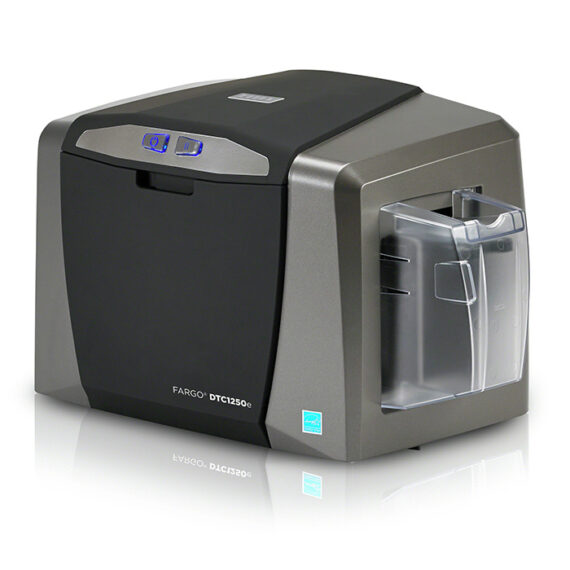What is a direct to card printer?
A direct-to-card (DTC or dye sublimation) printer prints ink directly onto a card's surface. This kind of printer uses dye film which feeds in between two spools in the printer and, when it comes into contact with the thermal printhead, the card design will be printed onto the card.
In Fargo printers, "direct-to-card" refers to a printing technology where the image is directly transferred onto the surface of the card using a ribbon. This is the most common and affordable type of ID card printing.
Here's a breakdown of direct-to-card printing in Fargo printers:
How it works:
Ribbon: A special ribbon containing dye or resin is used.Printhead: The printhead heats the ribbon, causing the dye or resin to transfer onto the card.Image formation: The heated dye or resin forms the desired image on the card surface.Advantages:
Cost-effective: Direct-to-card printers are generally more affordable than other printing technologies like retransfer.Simple operation: They are relatively easy to use and maintain.Fast printing: Direct-to-card printers can print cards quickly, making them suitable for on-demand printing.Limitations:
Image quality: While good, direct-to-card printing may not offer the same level of detail and sharpness as retransfer printing.Edge-to-edge printing: Direct-to-card printers typically cannot print directly to the edges of the card.FARGO direct-to-card printers:
DTC1500: An affordable and versatile option for basic ID card printing.DTC4250e: A mid-range printer with more features and higher print speed.DTC4500e: A high-security printer with advanced features for secure ID card issuance.
Summary:
The direct-to-card printing is a reliable and cost-effective solution for most ID card printing needs.



Comments
Post a Comment